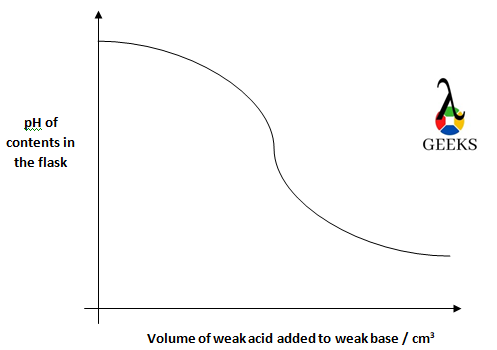The reaction between HF and Zn(OH)2 is a reaction between a weak acid and weak base that undergo hydrolysis. Let us see how HF and Zn(OH)2 react.
HF does not show acidic property when anhydrous and hence does not corrode metals except potassium. However, its concentrated solution shows acidic character. Zn(OH)2 is amphoteric in nature and dissolves in acids forming salt and water.
This article deals with lesser known facts about the reaction between HF and Zn(OH)2 and its properties.
What is the product of HF and Zn(OH)2?
The concentrated solution of HF is a weak acid which when reacts with weak base Zn(OH)2 undergoes hydrolysis to give zinc fluoride (ZnF2) and water ( H2O).
2HF + Zn(OH)2 = ZnF2 + H2O
What type of reaction is HF and Zn(OH)2?
HF and Zn(OH)2 is an acid base reaction involving double displacement of atoms along with precipitation of zinc fluoride (ZnF2) which is a salt of weak acid and weak base.
How to balance HF and Zn(OH)2?
The HF + Zn(OH)2 equation can be balanced by following these steps:
- The unbalanced equation between HF and Zn(OH)2is written as follows:
- HF + Zn(OH)2 = ZnF2 + H2O
- In order to balance the H atoms which are 4 on the left hand side and only 2 on right hand side, multiply HF with 2 on the reactant side and the complete balanced equation can be written as:
- 2HF + Zn(OH)2 = ZnF2 + H2O
HF and Zn(OH)2 Titration
HF + Zn(OH)2 titration is an acid base titration where solution of acid are titrated against standard alkali solution. But when such a titration is carried out, the pH of the solution decreases on addition of acid to base and it does not provide a significant reaction towards the indicators used in the titration.

HF and Zn(OH)2 Net Ionic equation
The net ionic equation for the reaction between HF and Zn(OH)2 can be written as:
2H+(aq) + Zn(OH)2(s) = Zn2+(aq) + 2H2O(l)
The steps to write the net ionic equation are as follows-
- Write the state symbols for each substance and then split the electrolytes into ions:
2H+(aq) + 2F–(aq) + Zn(OH)2(s) = Zn2+(aq) + 2F– (aq) + 2H2O(l)
- Cross out the fluoride ions ( spectator ions) on both sides of complete ionic equation to get the net ionic equation as:
2H+(aq) + Zn(OH)2(s) = Zn2+(aq) + 2H2O(l)
HF + Zn(OH)2 Conjugate pairs
In the reaction between HF and Zn(OH)2, there are two pairs of conjugates which differ by a proton.
- Conjugate base of HF= F–
- Conjugate acid of H2O = OH –
HF + Zn(OH)2 intermolecular forces
HF + Zn(OH)2 has following intermolecular forces-
- HF is a polar molecule having dipole – dipole forces. HF shows interionic attractions in an aqueous solution.
- Zn(OH)2 has coulombic ionic and Vander Waals’s forces.
- ZnF2 is ionic
- H2O has intermolecular hydrogen bonding
HF + Zn(OH)2 Reaction enthalpy
The enthalpy of reaction for HF and Zn(OH)2 is 953.6 kJ/ mol. The enthalpy of formation is given as –
- Enthaply of formation of HF= -273 kJ/mole
- Enthaply of formation of Zn(OH)2 = – 642 kJ/ mol
- Enthalpy of formation of ZnF2= 337.2 kJ/mol
- Enthalpy of formation of H2O = – 285.8 kJ/mol
- Reaction enthalpy (ΔHf) = Standard enthalpy of formation (product – reactant)
Thus, ΔHf = [(337.2) + 2*(-285.8)] – [(-642) + 2*(-273)]
ΔHf = [ -234.4] – [-1188]
ΔHf = 953.6 kJ/mol
Is HF + Zn(OH)2 a Buffer solution?
The reaction between HF and Zn(OH)2 forms a buffer solution having ZnF2 and water both of which can control the pH of the solution as it has both acidic and basic properties at certain pH.
Is HF + Zn(OH)2 a Complete reaction?
The reaction between HF and Zn(OH)2 is a complete reaction and proceeds in one direction only as resulting into the formation of ZnF2 and water. However the reaction can be reversed at a certain temperature as zinc fluoride is soluble in water.
Is HF + Zn(OH)2 an Exothermic reaction or Endothermic reaction?
HF + Zn(OH)2 is an endothermic reaction as it has positive enthalpy of reaction which is given by 953.6 kJ/mol.
Is HF + Zn(OH)2 a Redox reaction?
The reaction between HF and Zn(OH)2 is not a redox reaction as the oxidation states of different elements does not change as the reactants convert into products.
Is HF + Zn(OH)2 a Precipitation reaction?
HF + Zn(OH)2 is a precipitation reaction that forms solid precipitate of zinc fluoride (ZnF2) as it is only slightly soluble in water.
Is HF + Zn(OH)2 a Reversible reaction?
HF + Zn(OH)2 is a reversible reaction as HF is a weak acid and Zn(OH)2 is a weak base both of which ionize only partially in solution. Further, the product formed, zinc fluoride (ZnF2), is slightly soluble in water thus the reaction can be reversed at a certain temperature.
Is HF + Zn(OH)2 a Displacement reaction?
The reaction between HF and Zn(OH)2 is a double displacement reaction where zinc is displaced by HF and F is also displaced by Zn(OH)2.
Conclusion
The reaction between HF + Zn(OH)2 gives white precipitate of zinc fluoride (ZnF2). This reaction serves as a good example of a weak acid and weak base which react with each other to give a neutral solution. This reaction cannot be used to determine the relative strength of HF.
Read more about following HF facts
Hi…This is Rashi Dixit. I have completed my M.Sc. and qualified NET in Chemistry. I have also qualified GATE exam and state-level Assistant professor examination. I am passionate about teaching Chemistry and I constantly explore and learn new horizons to improve my knowledge.
We can connect via LinkedIn: